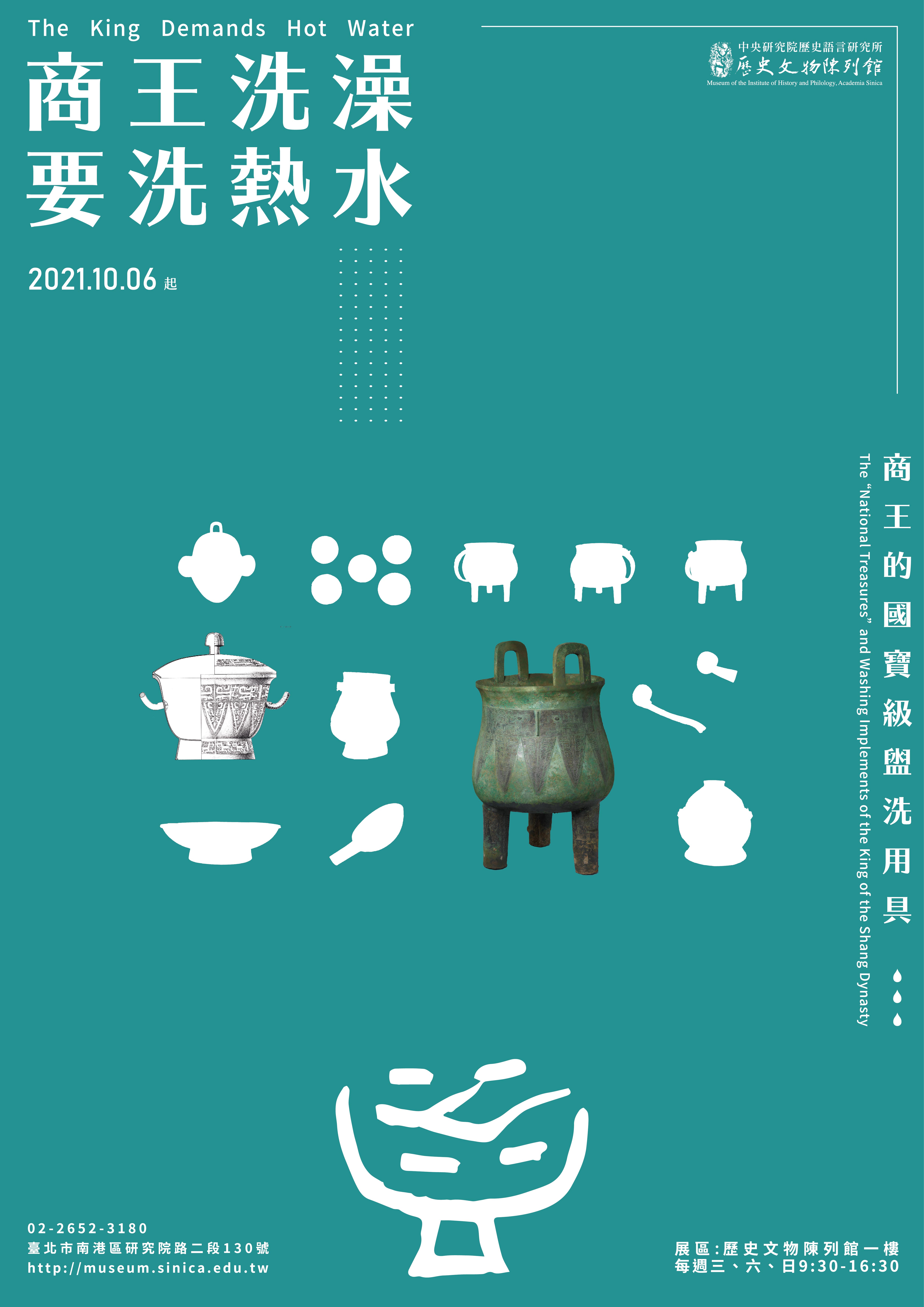Exhibition: The King Demands Hot Water: The “National Treasures” and Washing Implements of the King of the Shang Dynasty

Exhibition Date: Starting October 6, 2021
Exhibition Room: 1st Floor, Museum of the Institute of History and Philology, Academia Sinica.
Exhibition Website:
http://museum.sinica.edu.tw/en/exhibitions/83/
The majority of homes today are equipped with water heaters, and if desiring to wash with hot water, one simply turns on the faucet and watches warm water flow forth. But from 3,200 to 3,300 years ago during the late Shang dynasty, how did the king of the Shang dynasty, the royal family, and members of the aristocracy freshen themselves up? How did they bathe? And did they use hot water? Textual materials are insufficient to answer these questions, and so, we must turn to archaeological findings and materials. At Yinxu (the Ruins of Yin) in Anyang, Honan province, we have discovered four or five linked tombs and sacrificial pits where unearthed artefacts have allowed us to better understand the washing methods of Shang royalty, including the use of hot water.
The exhibition has two core themes of interest: “vessels and implements for the king of Shang to wash” and “vessels and implements for the king of Shang to use hot water.” Regarding the first, a group of related objects discovered from the east ramp of royal tomb M1400, Hsi-pei-kang, Yinxu are on display, including a “Yü Basin,” “Yu Shao Ladle,” “P’an Plate with Dragon Decor,” “Hu Pot with Bow-string Line Decor,” “Bronze Human Mask,” and five “Pottery Skin Scrapers.” And the vessels and implements concerning the use of hot water have been unearthed from sacrificial pits associated with royal tomb M1400, specifically pits M1435, M1380, and M1382. The artefacts on display include a “Ting Cauldron,” “Ting Cauldrons with Single Handle,” “Bronze Spoons,” a “Pou Lidded Stoneware Vase,” and other objects of interest. In some of the sacrificial pits, the remains of human sacrifices have also been discovered, indicating that these vessels and implements for heating water and the servants who attended to the heating processes belonged to the king of the Shang dynasty.
In short, from these artefacts discovered at royal tomb M1400, Hsi-pei-kang, Yinxu and associated sacrificial pits, we are able to apprehend the washing practices and processes of heating water used by the king of the Shang dynasty. A big cauldron was used to boil the water, and single-handled small cauldrons drew the water out to be poured into basins for use. When washing one’s hands or face, a servant poured the water using a ladle and the water then collected in a basin. For bathing, skin scrapers were also used to remove any dirt or dead skin. These processes, from start to finish, were all attended to by servants. In addition, these vessels and implements on display are not just rare to get a glimpse of—whether by us today or even by most living during the Shang dynasty—but four of the artefacts have been registered by the Ministry of Culture as “national treasures” or “significant antiquities,” thus deeming these objects as both washing implements and treasures of the king of the Shang dynasty.

